Can Self-Driving Cars Increase Employee Engagement?
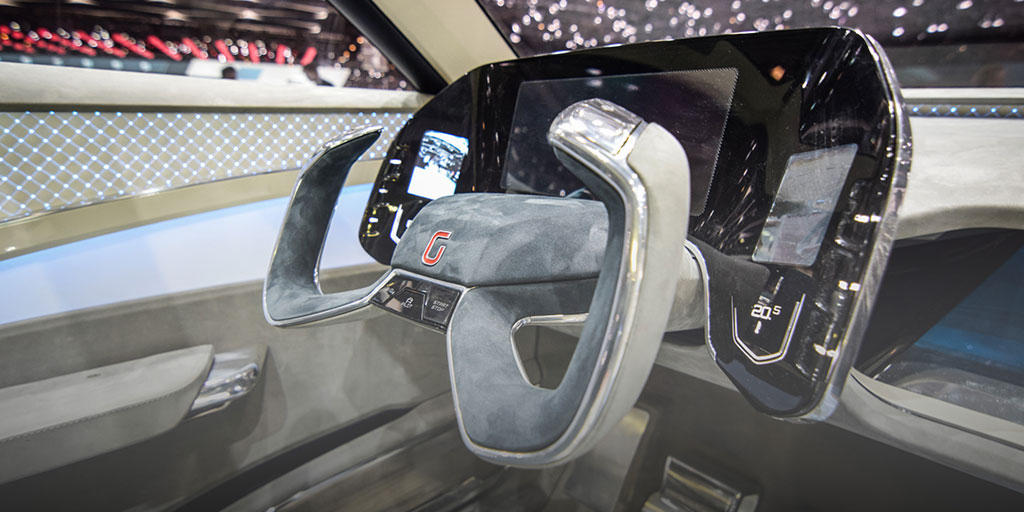 It seems like yesterday when Steven Spielberg invited us into cinemas to experience his jaw-dropping world of Jurassic Park. It had everything a sci-fi blockbuster could have in 1993. Dinosaurs. Action. Suspense. Samuel L. Jackson. And, of course, self-driving Ford Explorers.
It seems like yesterday when Steven Spielberg invited us into cinemas to experience his jaw-dropping world of Jurassic Park. It had everything a sci-fi blockbuster could have in 1993. Dinosaurs. Action. Suspense. Samuel L. Jackson. And, of course, self-driving Ford Explorers.
Fast forward to the summer of 2015, and we not only have a new Jurassic Park film, but we also have big name companies, such as Google and Mercedes-Benz, drastically shifting gears toward the research and development of autonomous vehicles, turning Hollywood magic into a tangible reality.
And while for many companies the main focus has been solely on the testing of automated vehicles for public road use, there’s another side companies are also exploring for even further possibilities – automated mobile workstations for employee engagement. As such, new technology brings with it new regulations and issues that have to be resolved before we can all sit back and enjoy working from our backseats.
Life is a Highway
Could you imagine in twenty years a mobile workstation pulling up to your driveway? Well, the folks at IDEO can. They envision a world where autonomous traveling pods, which they call WOW (Work On Wheels), will be an everyday occurrence for companies and employees.
Companies that need a driverless vehicle for a specific need could easily book these autonomous pods. For instance, if a company’s building were under construction, restricting office access, then they could reserve a WOW from IDEO and have it pick up their employees, resuming their work – only in a driverless mobile workstation.
It’s a really interesting concept to think about, especially given the opportunities for improving employee engagement. For example, there are a number of factors that determine an employee’s unhappiness at work, such as, which many overlook, the lack of natural sunlight and ventilation.
IDEO realizes this. They see opportunities for employers to utilize the WOW’s mobility for working with natural sunlight and ventilation. Let’s say there’s a really good restaurant we want to go to for lunch – but it’s an hour away. However, since we’re not driving, we’ll not only have that commute time for working, but we’ll also get access to the sun’s natural rays and breezy, fresh air.
I can see voice of the employee happiness ratings going through the sunroof!
But with all technology there are still issues that have to be resolved before these vehicles are completely available to the public.
Accidents Happen
Google’s driverless vehicles, for instance, are going through some bumpy test drives at the moment. The Associated Press reported that Google’s self-driving cars were involved in three collisions in California last September, bringing a total of 11 minor accidents within six years.
But according to Google’s Chris Urmson, Director, Self-Driving Cars, “Not once was the self-driving car the cause of the accident.” While that is somewhat of a relief, it’s still troublesome to think of yourself in an accident, especially when it involves artificial intelligence.
This brings up a new list of insurance headaches that need to be mitigated. For instance, who’s to blame when someone’s “car” accidentally malfunctions and runs into your bumper, while the “driver” is in the back of their car asleep?
Robert Peterson, director of the Center for Insurance Law and Regulation at Santa Clara University, has a possible solution. He says that the person in the driverless car would become the “agent,” which would allow them to be liable for “financial responsibility limits.”
It’s these types of scenarios that insurance companies and lawmakers are going to have to dissect and rethink to find the fairest solutions for legal policyholders.
Driving Change
There are also a number of regulations these autonomous vehicles and drivers must pass before public use, much like the fledging drone technology.
The National Highway Traffic Safety Administration (NHTSA) is already conducting a four-year study to help states for recommending laws. For instance, the NHTSA recommends that drivers will need to test for an autonomous-specific driver’s license before they can use an automated vehicle. This includes a mandatory training program for drivers in case something goes wrong with their vehicle.
The NHTSA has also created five new classifications for self-driving vehicles, which range from 0-4 levels. The “Level 0” will allow drivers to legally switch to full automation only in case of an emergency, while the “Level 4” will allow drivers’ vehicles to be completely autonomous the entire time they’re in the car.
It’ll be interesting to see how far this technology takes off in the next few years and how states will use regulations without limiting the promising potential for self-driving vehicles, after all, change is scary.
The Road Ahead
Similar to last century’s evolution from horse to car, automated vehicles are logically the next step in personal and public transportation. It will forever change the way we think about work and our perception of every day living. And though this technology is only in its infancy and still has many legal issues that need to be navigated, the possibilities for companies, employees and people are limitless and exciting.
Though it’s a safe bet to say we’ll see many self-driving vehicles covering the road in the next twenty five to thirty years, we might have to wait a little longer to witness a cloned T. Rex at our local zoo.
Millennial Employees: Just Like You and Me
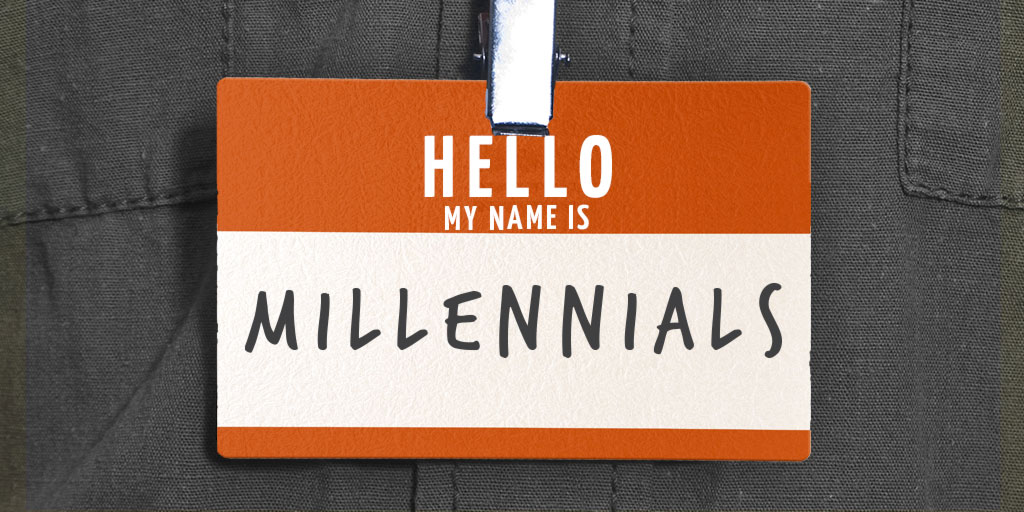
Stereotypes. What are they good for? Absolutely nothing. Sadly, the millennial generation has fallen victim to such unflattering labels as “entitled,” “lazy” and “disloyal.” They’re known as the generation that wants everything handed to them. The generation that would rather talk to an artificial intelligence sales rep than to a human being. While that may be true for a portion of these digital natives, it’s unfair, and certainty untrue, to categorize an entire generation of people as “lazy,” especially when these types of people can be found in every generation.
Actually, millennials are not as different as older generations than you think. Heck, I should know, I raised two – shout out to Dawn and Darla! And, though the tools for communication and interaction have changed, basic human instincts and needs have not. Maslow’s hierarchy of needs hasn’t fundamentally changed. So let’s look at a few misconceptions surrounding Millennials in the workplace and understand how they’re not that exotic.
New Technology Isn’t Exclusive to Millennials
Millennials have a certain grasp for technology. After all, they’re the first generation to grow up with iPods, smartphones and Facebook. They were born people of the screen “pointing and clicking”, now “touching and swiping”. This has lead to the assumption that the majority of millennials have zero boundaries when it comes to mixing personal and work-related social media accounts. They have been referred to as the technology tribe.
Simply another stereotype, according to IBM.
The IBM Institute for Business Value surveyed 1,784 Baby Boomers, Gen Xers and Millennial employees from organizations across 12 countries and 6 industries to get a better understanding of employees, particularly millennials.
They found that 62 percent of Gen X said they use their personal social media accounts to sell or market products for their work. Millennials? 54 percent.
Being a digital native, it seems, gives way to having a natural and better understanding of digital workplace discretion than Gen X appears to have. But does it really make them different? They know the tools, but have their wants and needs changed?
Another assumption about workplace Millennials is how they prefer to learn new work skills virtually, since they’re digital natives. However, the reality is that they would still choose face-to-face interactions over virtual ones.
IBM, for example, also found that 39 percent of millennials would rather attend a third-party sponsored conference/event in person to learn new skills. Yet, some employers still think many millennials would rather learn from a YouTube video.
Just because you’re born with an iPhone in your mouth, doesn’t mean you need it to learn a new work skill by someone in person. So maybe it’s not technology for technology’s sake, but rather a better way to connect – with people.
Greener Pastures
Job-hopping has become another issue employers assume millennials have. They think millennials have a 1-year mindset at their current employer, waiting on the next big thing. When that’s the common belief by employers, it’s no wonder millennials have such a hard time finding a job after college.
But to debunk that myth, according to a study by Bentley University, eighty percent of millennials still believe they’ll stay with less than four companies for their entire career. That’s quite the contrary from the 1-year mindset stereotype.
Not That Special
Everyone loves a pat on the back for a job well done, especially millennials, according to some. For instance, there’s a misconception that the majority of millennials want a gold star and constant gratification from their superiors.
But when you consider how we as parents and society have trained our children to expect recognition, it’s no wonder these stereotypes and misbeliefs are created. Heck, my girls were the worst basketball players on their teams in school, yet we amassed a huge collection of trophies, medals and ribbons.
However, despite what we may think we know about millennials wanting constant gratification, the numbers appear to tell a different story.
For example, IBM found that 35 percent of millennials would rather have an ethical and fair boss, compared to 29 percent that want a boss who recognizes their accomplishments.
In all honesty, though, we all want to be awarded for a job well done. Who doesn’t? I don’t care who you are or what year you were born – if you do a good job, then you want recognition. For some reason, we think millennials are the only ones that think this. The fact is, everyone does, no matter the generation.
Open Arms
Companies need to quit believing in these myths and stop stereotyping millennials. They need to embrace this generation that will make up 75 percent of the workplace by 2025. Remember, millennials aren’t some special generation with a list of demands for their services. They want a good-paying job, just like every generation before them. Instead of labeling, let’s start listening. Let’s lean in and better understand millennials through our own interactions. And then maybe we can quit assuming and start knowing how millennials work.
The Unknown Future of Drone Technology
 In 2013, Amazon CEO Jeff Bezos announced to the world that the online retailer would begin to develop a “drone-to-door” delivery service for its loyal customers. Dubbed Amazon Prime Air, the system would deliver packages directly to your doorstep in just 30 minutes after an order is placed, setting a new and higher bar for “fast delivery.”
In 2013, Amazon CEO Jeff Bezos announced to the world that the online retailer would begin to develop a “drone-to-door” delivery service for its loyal customers. Dubbed Amazon Prime Air, the system would deliver packages directly to your doorstep in just 30 minutes after an order is placed, setting a new and higher bar for “fast delivery.”
However, after a variety of issues and concerns were addressed by increasing regulations added by the Federal Aviation Administration (FAA) to approve Amazon’s drones, the dream of flight seemed grounded. It appeared Bezos’ announcement would never get off the ground. But after two years of waiting for the FAA, Amazon will finally get to test these drones on U.S. soil–or, should I say U.S. air? – – this April, bringing customers one step closer to having their Tide detergent refilled by a delivery drone.
Despite the U.S. government dragging behind on these approvals, for retail and civilian use, sales for drones aren’t expected to slow down anytime soon. Companies like Teal Group, an aerospace research firm, estimates that sales of both military and civilian drones will total over $89 billion by 2023.
Other big companies, such as State Farm and AIG, are also getting into the drone business. In fact, State Farm is the first insurance company in the United States to receive regulatory approval to test drones for commercial use. With drones popping up in so many different industries, it makes me wonder, what impact will drones have on companies’ customer experience – good and bad.
The Good
State Farm plans on changing the insurance industry for the better, utilizing drones to aid in natural disaster relief. For instance, instead of State Farm spending the money (and time) to ship hundreds of claims adjusters out to natural disaster sites to assess damages, they will send only a handful of agents equipped with a drone partner to more efficiently survey damaged property.
Jason Wolf, a property defense attorney and shareholder at the Florida based firm, Koch Parafinczuck & Wolf stated in an interview to ClaimsJournal.com,
“I envision a time when, after a catastrophe, an adjuster pulls up to a neighborhood and opens the trunk of his car and presses a few buttons on his tablet device and the drone does an immediate survey of everything and streams it all right to his tablet device, and he knows exactly where to go first and what’s most significant within minutes. Costing very little money, the insurance company has a sense of everything that needs to be done in a very short about of time.”
Imagine all the headaches this could mitigate for customers and employees after the chaos caused by unfortunate losses created by natural disasters.
It’s interesting, too, how this type of surveying will require additional training, but training we might be familiar with. Much like a police officer who trains alongside his dog in a K-9 unit, insurance adjusters will train alongside their partner – only in this industry it would be a drone.
While there is debate in the insurance world about how drones will operate, one thing is for sure — they will be operated and utilized to speed up services and save on cost, making customers’ lives a little easier and more convenient.
As such, claims assessment aided by a drone will yield quick turnarounds and an even quicker payout to the insured. Additionally, insurance companies will start offering drone insurance to owners of an Unmanned Aircraft System (UAS).
For instance, RiskandInsurance.com noted that the general types of coverage that will be required for the use of UAS and ancillary business activities will include liability, personal injury, invasion of privacy, property and workers’ compensation. They also mentioned that given the conservative nature of the insurance industry, carriers could place stricter guidelines on drone coverage than what is set by the FAA.
Once regulated and insured, drones will be sent out into the community to collect data. For example, what if someone’s home flooded? Well, insurance companies could send their drone to the flooded house and survey the area for all damages, speeding up the process for families impacted.
There is also the use of drones for the collection of data by third parties. Imagine that Ford is looking to target advertisements for a new truck to areas where the road conditions would demand the use of four-wheel drive. Ford hires an agency to send out drones to specific cities where they are looking to advertise.
This drone will collect data on road conditions and take images of cars on the road to make sure majority of drivers are in trucks, and will then report back on economic conditions. Ford doesn’t want to be advertising where citizens can’t or won’t pay for their product.
In a world becoming more drone-centric, these types of background checks and data collections via UAS will become increasingly more frequent. While there is a huge interest in drones and their future, there are those who have their concerns about how invasive drones can and will get down the road.
The Bad
Technology is, not surprisingly, changing fast. For example, in order for drones to reach the too invasive level, they must first be regulated. However, the government review process is 120 days before a decision is made, and by that point Amazon says the technology of the drone they submitted for regulation is now outdated and therefore must be updated, then resubmitted to the FAA for regulation, starting the 120-day review process all over again.
The other concern of the FAA is air traffic. Coming down with a few regulations on drone flight, the FAA is requiring that drone controllers have sight of the drone at all times and that they must operate under 400 feet.
BGlobal aerospace, defense, information and services company, Exelis, Inc., was featured in an article on Engadget recently, discussing its development of an air traffic control system for drones. Nearly ready for testing at the FAA approved drone-testing sites, the low-altitude monitoring system would keep tabs on compact aircrafts flying at or under the mandated 400 feet.
It’ll be interesting to see how industry giants, such as Amazon, overcome these obstacles to create a non-invasive customer experience with drone technology.
Once regulated, the next issue is over invasion of civilian privacy. Private and civil liberties advocates have raised doubts about the legitimacy of facial recognition cameras, thermal imaging cameras, open Wi-Fi sniffers, license plate scanners and other sensors commonly used by drones in the civilian sphere.
Civilian uses of drones for hobby are already causing issues, most notably at the White House, but across the country as well. The LA Times reported last June that while LA Kings hockey fans were celebrating their Stanley Cup victory, a group noticed a drone flying over their heads filming the scene.
Angry at the invasion of privacy, the crowd knocked the drone out of the sky using a t-shirt and then smashed it to bits with a skateboard. In Los Angeles, flying a drone in public is not illegal, but LAPD Cmdr. Andrew Smith commented that, “it was kind of an eye-opener for us, that this something we really need to pay attention to.” While the Kings fans reactions may seem a little over the top, the general population seems to feel the same way when they see a drone overhead.
With no official laws on the books regarding the use of domestic drones, the right to privacy becomes a large topic of concern for many citizens. The American Civil Liberties Union states on their website, “Congress has ordered the Federal Aviation Administration to change airspace rules to make it much easier for police nationwide to use domestic drones, but the law does not include badly needed privacy protections.”
It will be interesting to see how industries positively promote drone use to their customers, without them seeing it as a threat to privacy. After all, the customer may not always be right, but they are always the customer.
With that being said, however, it’s not just about protecting civilians from drones, but it’s also protecting these drones from enemies. The threat of a cyber-attack of a drone is always looming.
“Cyberattacks on your PC — they can steal information and they can steal money, but they don’t cause physical damage, whereas cyber-attacks in a UAV or a car can cause physical damage and we really don’t want to open that can of worms,” said Kathleen Fisher, the previous program manager of the DARPA project in a statement to NextGov.com
The Pentagon is currently working on developing code that will protect a Boeing Little Bird unmanned aircraft from being cyber hacked. Defense industry programmers are rewriting software to safeguard the computer onboard the helicopter drone and aim to have the project completed by 2017.
The Future
These issues aside, it’s exciting to think about what drone technology will bring to companies and their customers – and to people everywhere. Let’s face it, if we think we have seen the complete potential of what customer experience has to offer, then, well, we’re being naive. The new drone technology will reinvent customer experience once again. And the best part? We all get to see how in unfolds.
The future seems endless for the drone industry. Whether you feel they are an invasion of privacy, or they will begin to make our lives easier and aid society in ways that haven’t even been thought of yet, drones aren’t going anywhere any time soon. If you need to put it in perspective, a White Paper featured on Cognizant.com notes that 40,000 drones are expected to deploy in 2015, this is a number that will continue to increase each year. This industry is ready for take-off.

That means, if you haven’t come face-to-face with a drone yet, don’t worry, you will.
The Era of The Free Agent Employee

Where does a company brand begin and end? It surrounds everyone and everything. Does it embrace or suffocate the employees – people who are the brand?
More and more I’m being asked by people – in both the corporate sphere, those trying to control the brand perception, and individuals attempting to expand their own platform and network – what are the dimensions of personal branding and how does that fit with the corporate brand. What is personal branding? How do you do it? And what’s the real value of the “[insert your name here] Brand”? And how do companies use it to their advantage?
Unfortunately, official corporate reaction generally is, “why should I invest in employee loyalty when they’re at work scrolling through LinkedIn contacts and job postings, attempting to leverage the corporate brand as they are looking for their next job?”
We have all become keenly aware there are fewer and fewer retirement parties and gold watch presentations these days. We are fixated on our next gig because — well, because, what other option is there?
The employer-employee relationship has changed dramatically over time. Any perception of reciprocal loyalty has evaporated, along with the time cards and company picnics. We are no longer searching for the job of a lifetime, instead, we’re in search of a lifetime of jobs.
A wisely led company should recognize that personal branding is an important issue for their employees, and they should look for ways to manage it by encouraging employee confidence.
For example, a study by Brightedge says, “Companies that have a greater proportion of their employees on LinkedIn have more followers on their company pages.” This means employees will improve equity-brand trust by attracting other great employees, positively affecting brand reputation.
That’s a good thing.
Sadly, many times companies fail to recognize the benefits. They don’t realize these “free agent” employees can be strong assets to their company if they encourage personal branding and are recognized as thought-leaders.
How did this employee free agent mentality start?
Roots of an Issue
Capitalism is, intrinsically, a dynamic system of supply and demand. Financial and intellectual capital jets about these days faster than ever. Markets grow and collapse right and left. If there is such a thing as “The Economy,” one doesn’t have to be very old to have witnessed massive demonstrations of how fluid things are these days.
Once upon a time, it was good advice to tell a college kid to prepare for a career with multiple stops and regale them with stories of that slow but steady climb up the corporate ladder. Now we tell people of all ages – prepare for multiple careers!
This has created, what I like to call, the free agent employee model, which has caused a rift in company and employee relationships. Why? Because companies assume these “free agents” aren’t looking for long-term commitment. (E.g., Careerbuilder.com report that says 76% of full-time workers would leave their job if the right opportunity came along.) But how should employees think about job security and company loyalty, especially when facing the likelihood of downsizing, right sizing, re-organizing and lay-offs along their career paths?
For instance, check out N.F.L. free agents. You have this large talent pool of players willing to join the team offering the highest bid. Usually, the organizations will only offer one or two year contracts, because they know these “free agents” will jump ship in a heartbeat if offered more money by another team.
This “jumping ship” approach reminds me of the show Shark Tank, except it’s not limited to fledgling entrepreneurs or N.F.L. athletes — it’s now everyone.
Look at Millennials, for instance, they’re the ones that have seen their parents adapt to the aftermath of the recession, and they’re the ones that will continue this free agent way of thinking. Actually, 50% of the workforce will be made up of Millennials by 2030, according to PEW. Companies need to take note by putting an emphasis on employee engagement.
Employees Need Lovin’ – Even Free Agents
Companies that fear and want to crush the free agent mentality are missing important opportunities to capitalize on employee personal branding.
If employees feel a sense of fulfillment when working for us, which is employee engagement, and have a strong connection with their manager, which again is employee engagement, then they’re more likely to commit to our company and become brand advocates, which can help bring in more customers and new employee talent right to our doorsteps.
Remember, employees will stay for the right manager, not the right job – and will leave for the same reason.
When you think about it, it’s the front-line employees that are dealing with the customers every day. They’re the ones that help build the relationship between the brand and the customer. Who wouldn’t want to encourage that? And they’re the investment that represents the brand as much as the CEO every day.
However, executives tend to think their role plays a bigger part in the public’s eye than employees. According to a recent New Weber study, “50% of executives expect that CEO reputation will matter even more to company reputation in the next few years.”
In fact, the Edelman Trust Barometer says, “Employees rank higher in public trust than a firm’s PR department, CEO, or Founder. 41% of us believe that employees are the most credible source of information regarding their business.” But what if companies engaged and promoted their employees more? Would these numbers reflect it? Would companies focus less on CEO transparency, public and media Relations and more on employee engagement?
Moving Forward
The post-recession way of thinking is here to stay – at least in the foreseeable future. If we want our employees to start being loyal, then we’ve got to meet them half way. We have to embrace their free agent way of thinking. And we have to engage them. Then, maybe we can stop looking over employees’ shoulders and fearing free agency by giving employees a company they believe in promoting.
Transparency and Technology

If you’ve been keeping up with the “Great Live-Streaming Video App Race,” then you know that the new live-streaming apps for smartphones are competing with one another, fighting for dominance to pave the way for a new era of digital communication.
The apps allow anyone to video record anything and stream it in real time from their smartphone. Yep, anything. Throwing a weekend party with coworkers and friends? Why not stream it to friends that can’t make it, or to the voyeur public.
The Meerkat and Periscope apps will allow you to do just that. Companies, such as Red Bull and Mountain Dew, are already using Periscope to engage with audiences. It’s an exciting tool that could completely change our perception, if it hasn’t already, of live-streaming video, especially when it’s conveniently accessible from our purses or pockets. However, like most everything good in life, the apps do have drawbacks. Copyright infringement, anyone? Live streaming a Taylor Swift concert, for example, would seem to raise a few red flags.
But that’s not to say it can’t be used responsibly, and ethically. Which makes me wonder, as companies strive to become more transparent to gain employee and customer trust, how will they balance new technology to their advantage without overreacting and perceiving it as a threat to brand reputation?
Opportunities Lost
Last month, Royal Bank of Scotland Chairman Rory Cullinan sent several private Snapchat images of himself at a board meeting to his daughter, depicting how he was “not a fan of board meetings.” His daughter, a student at Durham University, thought it would be funny to share with the world by posting these private pictures to Instagram.
What seemed like a typical father-daughter moment in the digital age turned into something quite adverse. In just a few short weeks following the shared images, Rory Cullinan stepped down from his six-year position as Chairman.
Now, you might be thinking that sharing private Snapchat pictures while at work was not the smartest move. And you’re probably right. However, there’s something very human and endearing about the conversation between a father, who is also a top-level executive, and his daughter.
It shows a real side to executives, which many people don’t get to see. It reminds us, hey, that person is just like you and me. This is something companies strive to accomplish in this day and age – to show employees and customers that they’re people, too, and that you can trust them.
But when Cullinan’s daughter decided to share the pictures on Instagram, it seemed that company didn’t want that kind of transparency. Still, the fact is companies can’t really control how transparent they want to be — there are too many unpredictable variables, given the amount of technology available at everyone’s fingertips. People, all of us have become the media. Despite this, the Royal Bank of Scotland was hell-bent on protecting their image.
And that’s really a shame.
Post-crisis, the financial services industry is regarded as one of the stuffiest and least customer focused across the board. Perhaps the bank could have used this as an opportunity to show positive transparency and gain employee and customer trust. For example, the bank could have retweeted the Snapchat image with something like, “We attend boring meetings so your mobile banking isn’t boring.” Maybe even gain some customer trust. Instead, we’re left with a pressured, unfortunate resignation.
Do the old rules still apply today where technology takes communications and transparency out of the companies’ hands?
Yes, maybe his daughter should have kept those private images between herself and her dad. After all, your digital footprint isn’t in sand, it’s in cement. But when sharing videos, statuses, and pictures are, for the most part, a socially acceptable norm in 2015, it’s kind of difficult to see how far of a line Cullinan really did cross.
Redrawing The Fine Line
As Meerkat and Persicope pave the way for live-streaming apps, more and more companies will have to adapt to these changes in technology by rewriting their company policies or by finding ways to embrace them and engage customers and their own employees.
And if the recent Royal Bank of Scotland fiasco is an indicator of anything, it’s that companies haven’t yet figured out how transparent they want to appear in the public’s eye, even if they can’t completely control it. The internet never forgets. Clearly it is a challenge for large and regulated companies. They are still struggling with social media today.
With that being said, I think companies have to find the right balance. They have to be able to bend new technology to their will. This notion can be scary for leaders and companies everywhere. But so was uploading a video to YouTube for the first time not so long ago.
What do you think?
Music, Change, and The Age of The Customer
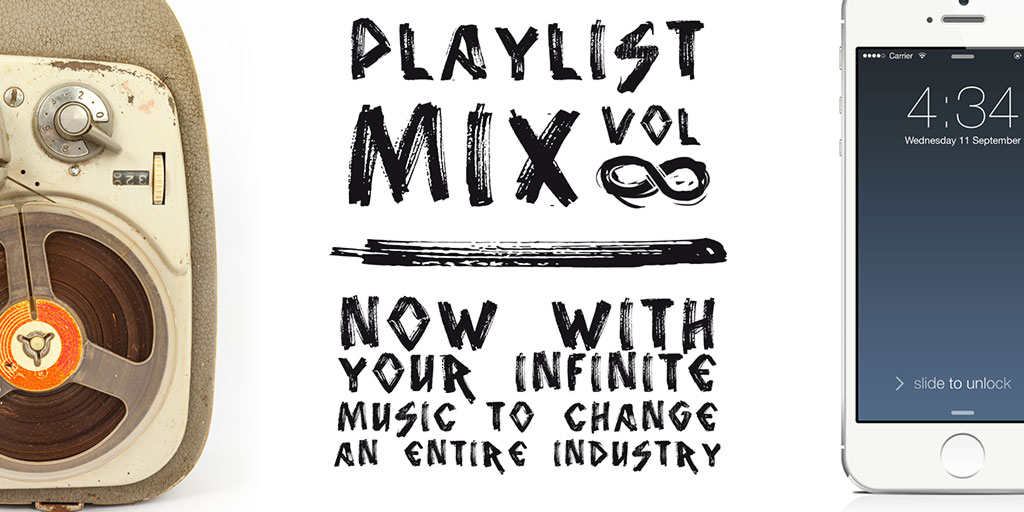
The music industry is in a state of chaos right now. It’s an aging dinosaur stuck in the tar of old vinyl. Musicians are no longer knocking on record labels’ doors, asking to get their album out there. Consumers are no longer buying their music from record stores. And with Taylor Swift withdrawing her entire catalog from Spotify, things get even crazier.
But as we enter 2015, the Age of the Customer continues. And if you don’t acknowledge this, you could end up loved as much as a set of tangled headphones.
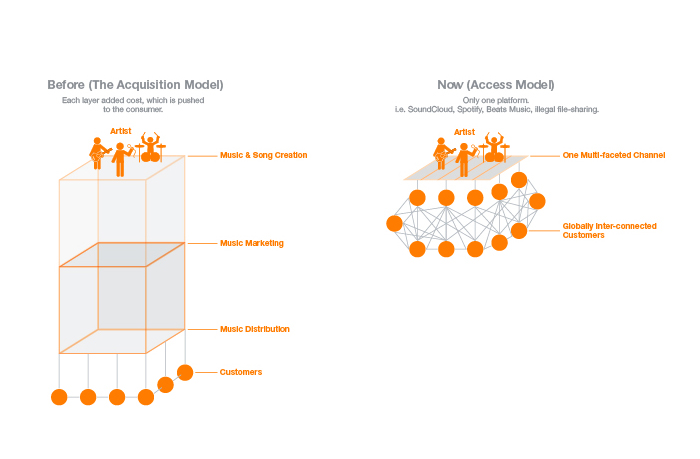
You Really Got a Hold on Me
In a time not so long ago, musicians had no choice but to go through record labels to even think about reaching their audience. The industry had a three-step process:
1) Song Creation
2) Marketing
3) Distribution
This meant artists created their album with the record label’s supervision, the record label then marketed it via in-house or through a third party, the radio stations then played it, and then, finally, customers could buy it at their local record store. Thus creating a multi-layered model that greatly benefited the record labels.
So what happened to this model?
They Say You Want a Revolution
The Internet happened. By the late ‘90s, when the Internet started to catch fire, people began realizing the potential of its power, such as the ability to digitalize entire music catalogs. This ultimately led to the birth of music piracy, which drastically cut into record labels’ pockets, creating a rippling effect felt throughout music – within the industry and among music lovers.
But when the iPod was introduced in 2001 it would completely shatter the traditional model of the music industry. Musicians could now bypass all of the steps and start putting out their own music through digital sites like iTunes, opposing music piracy and giving royalties back to artists And then, fans starting getting into the act.
As record labels worked to stay relevant, they had to offer artists new partnerships, such as 360° deals. A 360° deal assured artists with a share from their music, concerts, merchandising, publishing, and licensing income – ultimately creating a five-step model:
1) Recorded Music
2) Merchandising
3) Fan Sites and Ticketing
4) Broadcast and Digital Rights Management
5) Sponsorship and Management
Any Way You Want It
Enter the Age of the Customer. In order to combat piracy, stream-based cloud services began to emerge (see news on Spotify and Beats Music). Consumers now have the option to listen to any of their favorite songs, on multiple platforms, anytime they want – for free even, if you’re willing to put up with commercials.
So now consumers can choose to pay to download a song, buy CDs or records, stream their favorite radio stations or stream their favorite music without breaking the law. This, once again, is shattering the music industry’s business model.
And boy the times they are a-changin. Consumers now connect globally to their favorite bands through the Internet and bypass exclusive record label channels. The majority of consumers don’t buy albums, they download songs.
There’s been a greater attendance at concerts (Live Nation’s ticket sales are up 17%) . Fans seem to be more loyal. Consumers have it made right now, and things seem to be getting even better.
Spotify, the online streaming service, started contacting record labels for a possible negotiation. They offered them a share in their company for a band’s catalogue. The big boys started jumping on board, giving listeners gold record bands, such as Led Zeppelin and Pink Floyd – for free.
And the record labels are happy, because it’s the first time someone has offered them equity for their band’s music. Which means if Spotify goes public, well, it’s more money for them. Everybody wins.
However, not everyone is happy with the online streaming service, especially Taylor Swift. After “trying” her music out on Spotify, she decided it wasn’t the best medium for her music, so she pulled her catalog from the streaming service. She also believed her music wasn’t valued as much, because Spotify has no regulations on who gets what – and lack of earned royalties.
It’s an interesting situation right now. With artists pulling music from Spotify, even Jason Aldean recently joined the Swift bandwagon, it begs the question in the music industry – is online music streaming the future of music mediums?
Ch-Ch-Ch-Changes
In today’s market, technology has placed the ball back in the consumer’s court. The music industry is reeling and desperately trying to get back in the game, but the game keeps changing. Technology is transforming everything, we all know, but how is your company preparing for the inevitable? Are you creating a customer-centric culture that embraces the new? Or are you waiting to see how your competitors fare?
Inspiration and Innovation

Wearable technology is all around us. Chances are we’ll see more coming, too, as Under Armour recently acquired two wearable tech firms, worth around $600 million. It’s easy to see the push to combine functionality, pleasing aesthetics and personalization in a myriad of wearable technology, from watches to eyewear, socks, jocks and everything in between.
As if this isn’t amazing enough, there’s already a next wave of health care technology on the horizon via 3D printing. This takes wearables even further, using highly customizable technology to change lives and likely changing the face of medicine along the way.
A New Era of Healthcare
While wearable technology might seem a craze for the fitness nuts right now, the concept goes far beyond counting steps or calories. Google is partnering with Pharma giant Novartis to create a contact lens that can monitor patients’ blood sugar levels.
How’s that for 21st Century healthcare?
And that’s just one! Consider this, Oxitone has created the world’s first mobile bracelet for constant monitoring of heart diseases, including pulmonary and sleep-related maladies, for people with heart and other health concerns.
Beyond Wearable Technology
Look at 3D Printing, which is a process that creates physical objects from a three-dimensional digital-design model that will take healthcare technology to the next level.
The new technology offers patients customizable implants, which can reduce surgery times (e.g., surgery costs $100 per minute) and medical expenses (e.g., use of 3D printed medical reduces anesthesia risks during long surgeries).
Hearing aids, which can now also be 3D printed, now take less than a day to make – compare that to the previous weeks it used to take. No matter what industry we’re talking about, time is money.
The conventional wisdom, pardon the irony, is 3-D printing will only seem to be utilized more in the years to come, especially as it becomes more affordable for hospitals and medical clinics. Right now, it’s still in its infancy stage. But once grown, trust me, it’s going to be incredible.
Check out how 3D printing saved a two-year-old’s life here.
The Next Generation of Customer Experience
The future is bright for companies, employees, and more importantly, customers in this new era of customer experience. Because we now live in a time where we’re not just helping a customer’s experience by making their online purchase order easier, but we’re helping them live healthier, longer lives – even with illnesses.
Taking On Digital Transformation, Pt. 3
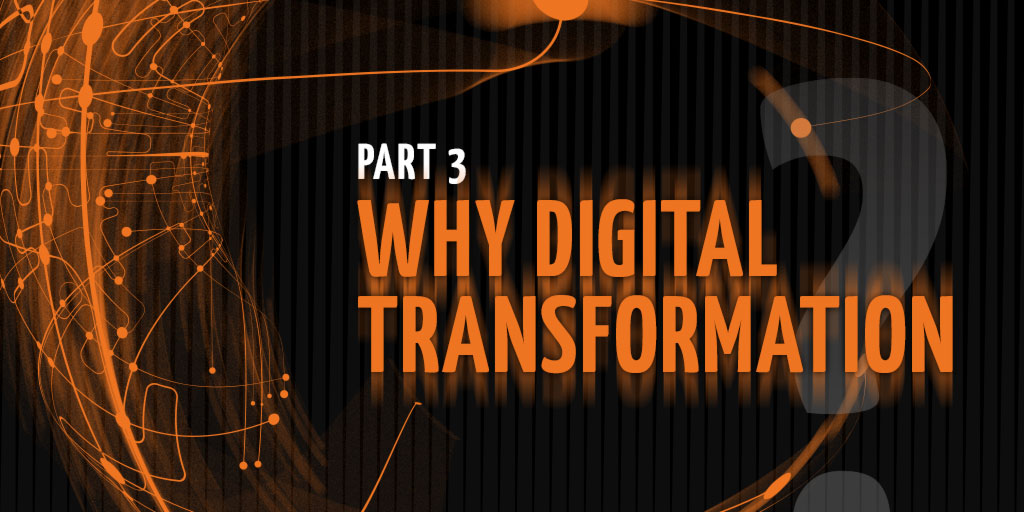
In my previous blogs, I explained how Change Agents need to demonstrate certain leadership qualities and how it’s vital that they utilize Customer Journey Mapping. In this one, I’m going to touch on how Change Agents need to see things differently for Digital Transformation to fully be effective.
Seeing Things Differently
As Change Agents, what happens when we miss the small things in Customer Journey Mapping? It’s more than likely because we aren’t using the right lens to view customer journeys. The right lens is through the customer’s.
For Example, let’s look at a Homeowner’s Policy. If we’re trying to sell a Homeowner’s policy to a customer, and we don’t inquire if he or she has other potential objects that can be insured, such as a boat or a trailer for that boat, then we just lost a potential sale.
Change Agents that see things differently, will instinctually know they need to ask more questions. Listen for what’s not being said and anticipate customer needs to add value. That’s what makes Change Agents so vital. We live in a time where we can’t be afford to miss the little things. Second chances are rare. We must quickly see and fill the gaps.
And since customer experience is the last non-commoditized product companies can offer, well, we really can’t afford to screw it up.
For instance, customers aren’t comparing big insurance companies with other big ones – they’re comparing them to Amazon and Google. Service delivery giants! They don’t think, “I’m going to buy insurance coverage – therefore, I should set my service expectations lower.”
Your customers, no matter the purchase or relationship, compare you with their last experience inside or outside of your industry. We no longer live within the relative safety of industry verticals.
Today we are compared on a horizontal – across industries, companies, products and services. Keeping this in mind and seeing things differently is a great way to make a smooth transition into Digital Transformation.
Reminder On Why Digital Transformation Is Essential
With all the talk of Change Agents and Customer Journey Mapping, sometimes we need to be reminded how Digital Transformation can impact our companies tremendously if implemented correctly.
A good example of this is, of course, Nike. They took their digital transformation to the corporate level with great success. They created a unified customer experience by bringing teams of marketers, designers and IT people to work together and approach physical and online products holistically under their Nike+ brand.
The result? Large amounts of customer data leveraged for a seamless customer experience. You can find the full report here.
When we look at other companies that are Digitally Transforming themselves successfully, then we can really get a grasp of how much potential it has to offer us.
That’s A Wrap
In closing, remember that Digital Transformation has to start from within. We need visionary leaders who see things differently, tools that work in our favor, and much persistence. Change is a process. And though it will be a slow and intimidating endeavor at first, the payoff of Digital Transformation is incredibly worth it.
Taking On Digital Transformation, Part 2
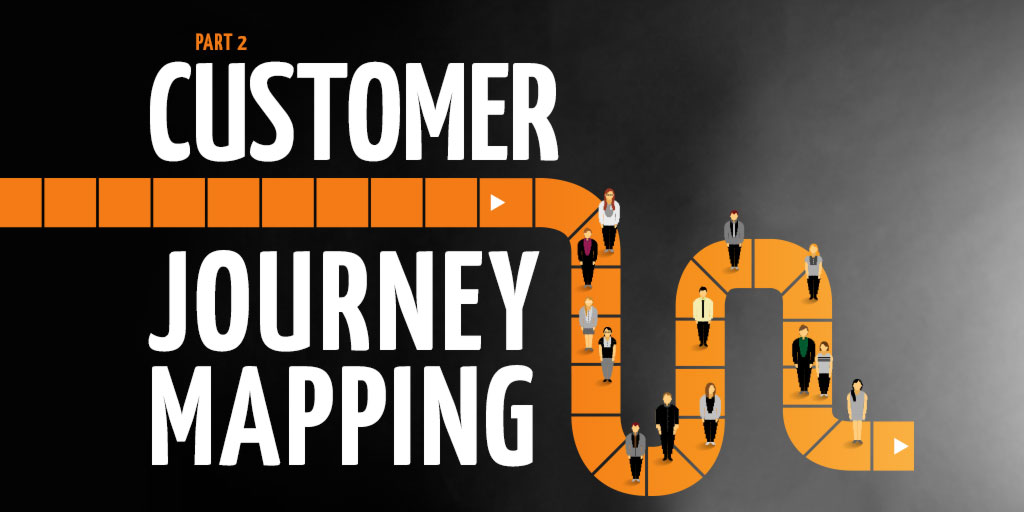
In part one of my Digital Transformation series, I explained how companies benefit from Change Agents who possess certain characteristics to lead a Digital Transformation evolution within an organization.
In Part Two, I’ll explain how Change Agents can utilize Customer Journey Mapping and how it can help with persuading stakeholders that a digital transformation is necessary.
No One Likes Getting Lost
That’s why we use GPS to get from point A to point B. It’s that journey in-between that shows us what we went through to get to our destination – or how we didn’t.
The same goes for Customer Experience. If we can pinpoint our customer’s journey from point A to point B, then we can assess any issues that occurred within their journey. This is the beauty of Customer Journey Mapping.
Different Maps For Different Folks
As a Change Agent in Customer Experience, we’re working for new opportunities to connect with customers in a meaningful way. That’s why it’s vital we use a Customer Journey Map for every journey our customers might have.
Here, you can find the three common Customer Journey Maps, but there can be many variations. The more maps we have, the more data we can collect. So, don’t be shy if you have more than what is expected. Every company and its customers are different.
Personas Are Everything
When we’re in the beginning stages of mapping, I recommend knowing the customer’s persona before diving any deeper.
I love using customer personas because they flesh out data and create more color to the differences or needs of a customer group, reminding us the data collected is from living, breathing people.
If we don’t know how our customer is feeling – for instance, being put on hold for an hour – then how are we to improve their overall experience?
Change Agents that don’t take the necessary measures to understand their audience are not going to be successful. A great example of this can be found here.
Know The Steps
If Change Agents want to get the most out of Customer Journey Mapping, then they need to think methodically, using the appropriate steps.
There are usually five steps in a Customer Journey Map, but like the said different maps, there can be more, so adjust accordingly. Check out this for a complete breakdown of the different steps Change Agents can take. I found it very useful, especially for leaders that don’t know where to exactly start or just need a refresher.
Ask Questions. Again. And Again.
Remember this, the point of a Customer Journey Map is to get inside the heads and hearts of customers and to assess any issues within their journey that could be deterring them from becoming brand advocates.
These deeper insights can also shine a light on opportunities to fortify positive perceptions and enhance the value of each interaction for the customer and the company. For these reasons, we need to ask as many questions as possible along the way.
There’s no such thing as too many questions. Even if some questions seem small – ask them. I love asking questions. Why? Because I get answers. If we don’t ask questions, then we can’t act to resolve problems.
The Proof Is In Our Pudding.
Once we’ve taken the appropriate steps and mapped out each customer’s journey, we’ll have a better chance at convincing the bigwigs that digital transformation is table stakes.
Our newly conceived map will show the small gaps in the customer’s journey – as well as the money the company is throwing down the drain, either through broken or inefficient processes or missed opportunities to up-sell and cross-sell.
With this type of evidence, executive leaders and stakeholders are going to find it hard not to listen to you digital transformation case. And combined with your informal influence, you’ll be improving the company’s customer experience in no time.
Moving Forward
Now that Change Agents are in place and a customer journey map has been created, digital transformation should be less intimidating and hopefully more attainable. In my next blog, I’ll touch on how Change Agents need to see things through a different lens in order to capitalize on their Digital Transformation goals.
Taking On Digital Transformation, Pt.1
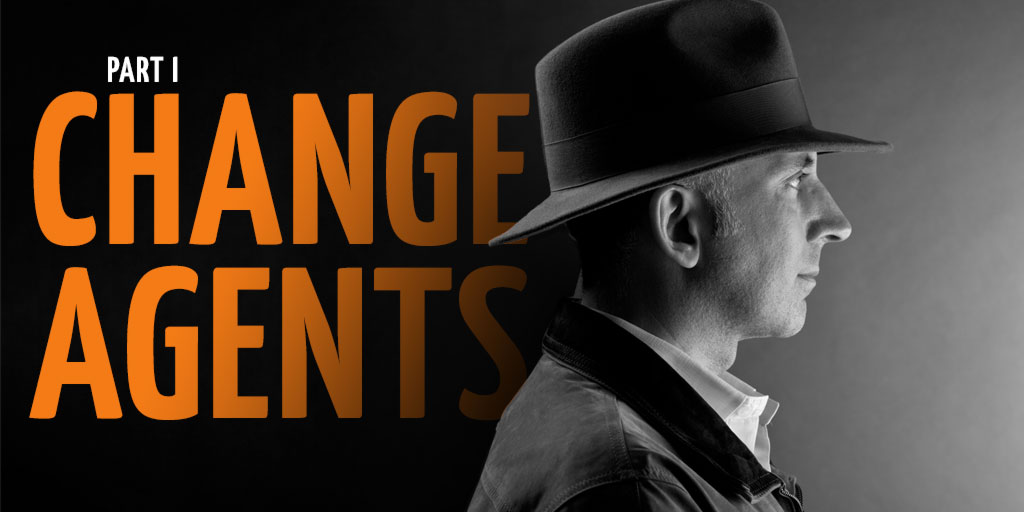
Today in 2015, we have a slew of new digital technologies that are changing companies’ behaviors and directions, forcing them to rethink their previous working business models in order to stay competitive and ahead of the game. Guess what? We’ll be saying the same about 2016, 2017, 2018 and beyond.
Companies are still struggling to embrace new customer–centric strategies. And in order for a company to excel in this new era of customer experience, companies need to become more agile or adept at digitally transforming themselves from within.
In this three part blog series, I’ll explain how companies can cultivate visionary leaders, utilize customer journey mapping and, ultimately, create a successful digital customer experience. For an even more in depth study, I recommend checking out Altimeter’s report on Digital Transformation.
Leaders. We Need Them.
It’s vital for a successful company to have a strong leader. In this day and age, having a strong leader is not enough. Companies need visionaries that see the changes happening among or ahead of them.
We all need people who aren’t afraid to stand up and believe in what’s right for the future of their company. We learn these admirable heroes and call them Change Agents. We romanticize them like James Bond, but without the guns or shaken martinis – okay, probably with the martinis.
Change Agents are aware of the shifting landscape digital disruption brings. They’re the ones that forge new relationships internally, bringing together support from different departments, ultimately selling digital transformation within.
Inside Looking Out
Change Agents are the nucleus of digital transformation. Therefore, it’s vital these culture change leaders possess certain traits that can spearhead digital transformation.
Take a look at this article for a good sense of what characteristics Change Agents need to have. The authors explain that Change Agents need to possess the right attitude, the appropriate knowledge, and the necessary skills to be successful.
If Change Agents don’t possess these traits, then you’re looking at a very unsuccessful journey through the ether. Technologies change, trends emerge but this still true: know what we need and we’ll get what we want.
Make Friends. Lots of ‘em.
Once the right Change Agents are in place, it’s crucial they make lasting friendships and forge productive alliances with stakeholders throughout the company before trying to present a new strategy.
Though, it is inherently difficult for people to influence top people from the bottom, hoping to change top executives minds, it can be done. Success comes from healthy informal influence. This means making connections in every department, no matter the rank, planting the seeds of change.
An example of this would be a fairly new business executive that wants to introduce CRM software to their company in order to create a more streamlined customer service, cutting unnecessary costs.
Next, when they present the plan, they’re rejected because the lack of internal connections they’ve made within the company due to new employment, or lack of informal influence.
This is why I can’t stress enough how important it is for Change Agents to find people in all levels of an organization that share the same ideology and then create a sustainable relationship with them. Because trust me, you’re going to need them.
Next Steps
On the road to digital transformation, Change Agents will face many challenges – and plenty of stops along the way. Given that the right interpersonal relationships are established, they will have a greater chance of implementing the change – especially with proof to back it up.
In my next post, I’ll show you how digital customer journey mapping can be used as an invaluable tool in Digital Transformation.









